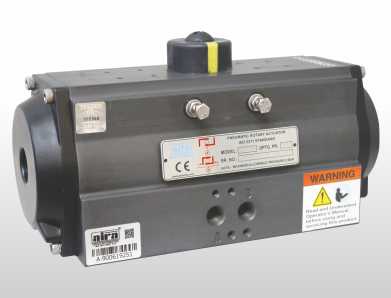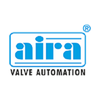Introduction to Pneumatic Actuators
Pneumatic actuators play a crucial role in various industries, offering efficient and reliable motion control solutions. Whether in manufacturing, robotics, or HVAC systems, pneumatic actuators provide the necessary force to move valves, gates, and other mechanical components. In this article, we will explore the different types, working principles, applications, advantages, and future trends of pneumatic actuators.
Types of Pneumatic Actuators
Piston Actuators
Piston actuators utilize the force generated by compressed air acting on a piston to produce linear motion. They are commonly used in applications where high force and precision are required, such as in industrial automation and machine tools.
Diaphragm Actuators
Diaphragm actuators consist of a flexible diaphragm that separates the actuator's internal components from the surrounding environment. When air pressure is applied, the diaphragm flexes, generating the necessary force to move the actuator's mechanism. These actuators are preferred in applications where cleanliness and leak-tightness are critical.
Rotary Actuators
Rotary actuators convert the linear motion of a piston or diaphragm into rotary motion to operate valves, dampers, and other rotational devices. They offer compact and efficient solutions for applications that require rotational movement, such as in control valves and robotics.
Working Principle of Pneumatic Actuators
Pneumatic actuators operate on the principle of converting the energy stored in compressed air into mechanical motion. When compressed air is supplied to the actuator, it enters a chamber, exerting pressure on the internal components. This pressure generates the force required to move the actuator's mechanism, resulting in linear or rotary motion depending on the type of actuator.
Advantages of Pneumatic Actuators
The advantages of pneumatic actuators over other types of actuators include:
- Cost-effectiveness: Pneumatic systems are often more affordable to install and maintain than hydraulic or electric systems.
- Simple Design: Pneumatic actuators have a straightforward design, making them easy to install and operate.
- Reliable Performance: With fewer moving parts and robust construction, pneumatic actuators are known for their durability and consistent performance.
Applications of Pneumatic Actuators
Pneumatic actuators find widespread use in various industries and applications, including:
- Industrial Automation: Pneumatic actuators are extensively used in automated manufacturing processes for handling, sorting, and assembly tasks.
- Robotics: In robotic systems, pneumatic actuators provide motion control for manipulating objects and performing complex tasks.
- HVAC Systems: Pneumatic actuators play a vital role in controlling airflow, temperature, and humidity in heating, ventilation, and air conditioning systems.
Factors to Consider When Choosing Pneumatic Actuators
When selecting pneumatic actuators for a specific application, several factors should be taken into account, including:
- Operating Pressure: Ensure that the actuator can handle the required operating pressure without exceeding its design limits.
- Environment Conditions: Consider factors such as temperature, humidity, and presence of corrosive substances that may affect the actuator's performance and longevity.
- Motion Requirements: Determine the type and range of motion needed for the application, whether it's linear, rotary, or a combination of both.
Maintenance and Troubleshooting Tips
To ensure optimal performance and longevity of pneumatic actuators, regular maintenance and troubleshooting are essential:
- Regular Inspection: Periodically inspect the actuators for signs of wear, leaks, or damage, and address any issues promptly.
- Lubrication: Proper lubrication of moving parts helps reduce friction and wear, extending the lifespan of the actuators.
- Common Issues and Solutions: Familiarize yourself with common problems such as air leaks, sticking valves, and insufficient force output, and troubleshoot them according to manufacturer guidelines.
Conclusion
The pneumatic actuator is a versatile and reliable motion control devices that find wide-ranging applications across various industries. With their cost-effectiveness, simplicity, and robust performance, pneumatic actuators continue to play a vital role in driving efficiency and automation in modern systems.


No comments yet